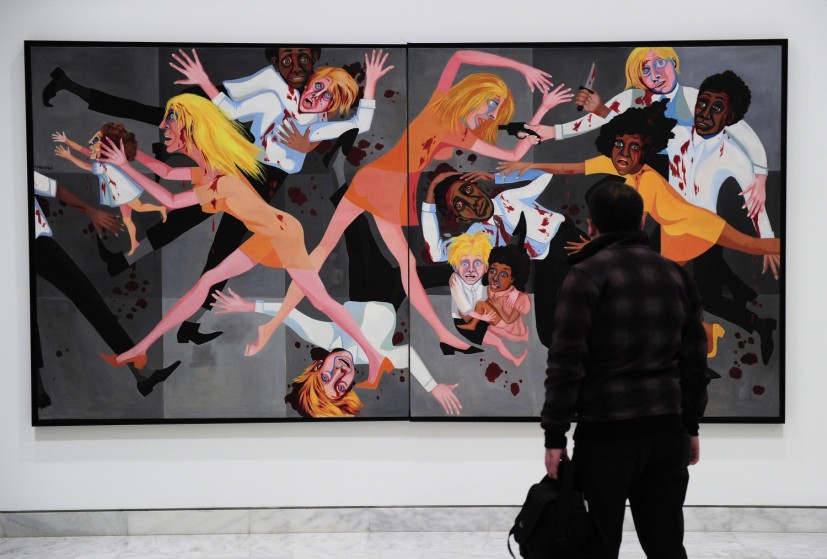As New York's Museum of Modern Art (MoMA) rose into a second wind back in 2019, following a substantial rehang, one display pairing turned heads better than others: Faith Ringgold's "American People Series #20: Die" (1967) opposite Picasso's "Demoiselles d'Avignon" (1907).
This was particularly progressive because MoMA was infamous for its highly noticeable gender imbalance and absence of diversity for decades, with its collection mainly dominated by works of Caucasian straight men.
Ringgold even found herself protesting this issue in the 1960s among other feminists, but unbeknownst to her, it would take tens of years before the institution finally heeds their voices. More interestingly, it would be her piece ushering in the change she sought out decades before.

'American People Series #20: Die' by Faith Ringgold
The artist, who has recently passed away at the age of 93, is considered to be one of the most influential trailblazers in the history of the Black Arts movement. None exemplifies that fact better than her piece "Die," with its racial, cultural, and historical underpinnings.
A tableau of vibrant and kinetic figures depicted amid a chaotic, bloody, and violent "dance," the piece was created following the dragging summer of 1967 when racial tensions came to a head into brutal conflicts between rioters and the police in cities like Newark, Maryland, and Detroit.
Ringgold placed herself in the position of storyteller and put to canvass imagery lifted from the conflicts through the depiction of dichotomous actors-male and female, of African and Caucasian descent-all viciously fighting while in a frenzied and horrified state.
In 2019, this snapshot of bloodshed reframed one of Picasso's greatest works into a narrative that explored African art's great influence on the Spanish painter, something he leveraged across decades to put out masterpieces exhibiting brilliance and complexity.
Hollan Cotter, an art critic from the New York Times, called the combination a "stroke of curatorial genius," applauding its "smart curators" for steering the "big white ship" of the institution in a direction that celebrates "history-altering talents" of all corners.
Indeed, Ringgold and her Black story-focused oeuvre will remain a driving force of this particular African corner of art, defiantly blowing against the institutionalized dominance of the majority, be it through her narrative quilts, sculptures, or paintings.